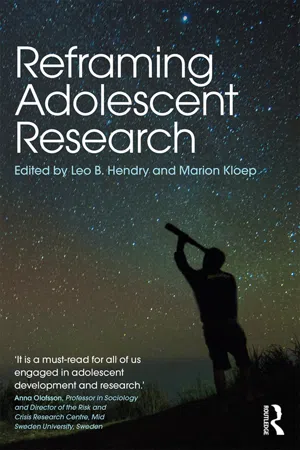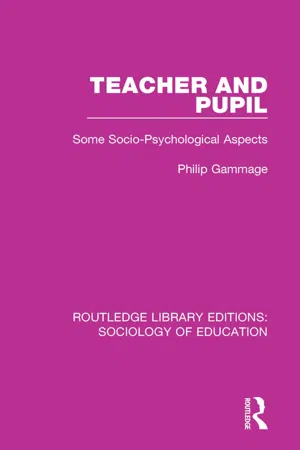Psychology
Young 2007
Young (2007) is a seminal work in the field of psychology that focuses on the concept of psychological resilience. The book explores how individuals can develop resilience in the face of adversity and trauma, drawing on research and case studies to provide insights into the factors that contribute to resilience. Young's work has had a significant impact on the understanding of human resilience and has influenced subsequent research and interventions in the field.
Written by Perlego with AI-assistance
Related key terms
Related key terms
1 of 4
Related key terms
1 of 3
5 Key excerpts on "Young 2007"
- eBook - ePub
- Thomas Keenan, Subhadra Evans, Kevin Crowley(Authors)
- 2016(Publication Date)
- SAGE Publications Ltd(Publisher)
mental tools of their culture, such as language and number, as well as the symbol systems that allow them to manipulate and reflect on these tools. For Vygotsky, understanding children’s development was a matter of understanding children’s acquisition of these mental tools (Rogoff, 1990).Broader changes within the field of cognitive psychology during the 1960s had an important influence on the study of children’s cognitive development. The study of information processing, or how information is taken in and flows through a child’s cognitive system causing various outputs or responses, was an important influence on developmental psychologists interested in children’s thinking (Klahr & Macwhinney, 1998). Information processing psychologists most often focus on how children take in or encode information from their environment, how they represent it to themselves, and how they operate on their representations of knowledge to create outputs or products (Siegler, 1998), like the solution to a math problem or an answer to a question about what Winnie the Pooh will do next.This review of the history of developmental psychology is by no means full or complete, and the interested student is recommended to pursue fuller accounts of the history of the discipline. However, it will allow us to go on and examine development within a variety of domains while understanding something of the origins of many of the ideas we will encounter.Principles of Life-span Development
One of developmental psychology’s eminent researchers, the late Paul Baltes (1939–2006), articulated a set of principles which guide the study of human development within a life-span framework. Baltes (1987) argued that these principles form a family of beliefs which specify a coherent view of the nature of development. It is the application of these beliefs as a coordinated whole which characterizes the life-span approach. Thus, Baltes often focused on old age in his later writing and research, but he described the issues of ageing – including wisdom, decline and changing relationships – in the context of the entire life span. We have therefore learned about human development in its entirety from his work. In this book, although we focus on development in children, we will similarly take a life-span approach to the study of development. - eBook - ePub
- Leo B. Hendry, Marion Kloep(Authors)
- 2018(Publication Date)
- Routledge(Publisher)
Why does one person become a rock star, and another person a rock scientist? Why are some people happy and successful, and others cranky, pessimistic, and perhaps even disappointed in life? Why do some people thrive and others do not? On the route towards adulthood, adolescence is a formative period. While growing up, adolescents may experience ups (e.g. going out with friends) and downs (e.g. a first relationship break-up) and each of these moments may affect their future development for better or worse. Development shapes adolescents into unique human beings. The complexity of the underlying developmental mechanisms makes developmental psychology a fascinating field of study. At the same time, it poses great challenges when we attempt to describe or even understand these mechanisms in quantitative terms. This chapter aims to guide researchers through these challenges, at least through some of them.Modern ecological theories on child development (e.g. Bronfenbrenner and Morris, 2006; Sameroff, 2010) stress that developmental processes are embedded in and affected by broader contexts, such as the neighbourhood, socio-economic status (SES), and culture. Even when children have the same set of genetic predispositions, come from the same neighbourhood, receive a similar style of parenting, and have personalities that are alike, they may still end up with different adult lifestyles. Thus, as researchers we have to acknowledge that there is no such thing as the developmental process that functions as a deterministic force on the route towards adulthood. We need to acknowledge heterogeneity, not only in developmental outcomes, but also in the probabilistic developmental mechanisms that underlie developmental change. One size does not fit all.Moreover, in dynamic system theories of development (Smith and Thelen, 2003), behavioural changes occur over multiple time scales, from seconds to years. Slower processes of developmental growth over years (e.g. establishing a loving romantic relationship) have its origins in and are affected by dynamics on smaller and faster time scales of daily interactions (e.g. having eye-contact with a class-mate and the subsequent hormonal response). These dynamics at different levels and on different time scales do not operate as distinct processes, but are unified and linked within one organism. Processes on different time scales are coherent with each other; a child cannot fall down, unless it has started walking; an adolescent does not have a ‘crush’, unless pubertal hormones are raging; a young adult will not have a conflict with their boss, unless they have a job. In spite of this coherence over time scales, the mechanisms can be different on each time scale; the faster movement of running is qualitatively different from the slower movement of walking. Thus, we cannot understand walking by studying the mechanics of running, or vice versa. - eBook - ePub
Teacher and Pupil
Some Socio-Psychological Aspects
- Philip Gammage(Author)
- 2017(Publication Date)
- Routledge(Publisher)
8Towards maturity: the developmental context and implications for educationStudents of educational or developmental psychology soon become aware of two recurring phenomena in their studies: first and foremost that one must recognize the debt owed by psychologists and philosophers to the work of Jean Piaget over the last fifty years. The study of children’s thinking would be infinitely poorer if we had not received much painstakingly gleaned information from Piaget on how children’s knowledge is built up and how this can shed light on the origins of knowledge. The second, somewhat more mundane, is that care must be taken to avoid the over-enthusiastic use of chronological age as an infallible index of characteristics in children. Its merit lies in its ease of operation when dealing with approximations of normative development. Its use is inevitable, but it defeats its purpose if the wide range of individual differences is not constantly borne in mind. Very often, in order to categorize or describe, syntheses and generalizations have to be attempted. The wise student remembers, however, that usually the child reflects the home more than the school pattern (except possibly during adolescence) and that popular stereotypes can be extremely dangerous particularly if taken and applied as indications of ‘correct’ development.The younger schoolchild and his acquisition of skillsObservations of teachers and research workers would lead us to believe that the child of five or thereabouts appears to reason best upon problems closest to his own experience, from personal involvement in concrete situations and as a result of optimum exposure to language skills. Usually, a child of this age is vulnerable to immediate distraction, afraid of antagonizing grown-ups, very aware of physical needs and not capable of discussions in large groups. From this it follows that wise adults dealing with groups of children of this age do not attempt to superimpose a form of social cohesiveness where it does not exist, but cater for individual attention along with the gradual promotion of awareness of others. - eBook - ePub
- (Author)
- 2012(Publication Date)
- Wiley(Publisher)
The shift beyond the individual is evident in cognitive as well as social development and is due, in part, to a revival of interest in the developmental theory of Lev Vygotsky (1896–1934), a Russian psychologist, who believed that mental functioning is a kind of action that may be exercised by individuals or by dyads or larger groups (Wertsch, 1991). His view was one in which mind is understood as “extending beyond the skin.” “Mind, cognition and memory…are understood not as attributes or properties of individuals but as functions that may be carried out intermentally or intramentally” (Wertsch & Tulviste, 1992, p. 549). Such terms as socially shared cognition (Resnick, Levine, & Teasley, 1991), socially distributed cognition (Hutchins, 1991), the social foundations of mind (Gauvain, 2001), and collaborative problem solving (Rogoff, 1990, 2003) reflect awareness that cognition can be a social enterprise. Interdisciplinary Developmental Science Collaboration between disciplines has been increasingly common in the current period as researchers have begun to probe more deeply the multidetermined nature of development (Parke, 2004). Sociologists, anthropologists, neurologists, geneticists, and epidemiologists have all been invited to join developmental psychology research teams (Modell & Elder, 2002). Lawyers, historians, and economists have been invited to place developmental research in a broader context. It is likely that the interesting issues and questions of this century will arise at the boundaries between disciplines. The dichotomy between applied and basic research has also faded during the current period, and developmental psychologists are encouraged to consider practical implications of the findings from their studies in either laboratory or field settings - Dominic Upton(Author)
- 2013(Publication Date)
- Routledge(Publisher)
However, development is not just about children. Development is a continuous process which progresses in differing aspects throughout our lives. Hence, we need to explore how we develop in childhood, adolescence, adulthood and in older age. This chapter will explore development across the lifespan and how psychological theory can be applied to these different stages, and how this theory can be applied within our nursing practice.Key messageDevelopment occurs across the lifespan – from childhood through to old age.This chapter will start at the beginning – with the newborn and how psychologists, such as Jean Piaget, have attempted to describe how children develop over their early life. The theories of Vygotsky and Erikson will subsequently be explored. Again, these will look at why they are relevant to your education and your clinical practice, not just if you are working in child health, but also if you are working in adult or mental health or with those who have learning disabilities.The remainder of this chapter will then explore adult development before looking at older age, followed by death, dying and the grieving process.3.2 Piaget’s theory of cognitive developmentUntil the 1930s, children were considered to be small versions of adults. It was assumed that children thought in the same way as adults, but were incapable of behaving as adults due to their inexperience of the world. Although the flaws with this proposal may now seem obvious, this notion characterised many of the ideas surrounding child development at that time.Jean Piaget (1896–1980), a Swiss psychologist, was instrumental in developing a theory of cognitive development that fundamentally challenged this perspective. Piaget rejected the behaviourist idea that children simply learned through a process of reward and punishment (see Chapter 2
Index pages curate the most relevant extracts from our library of academic textbooks. They’ve been created using an in-house natural language model (NLM), each adding context and meaning to key research topics.
Explore more topic indexes
Explore more topic indexes
1 of 6
Explore more topic indexes
1 of 4




